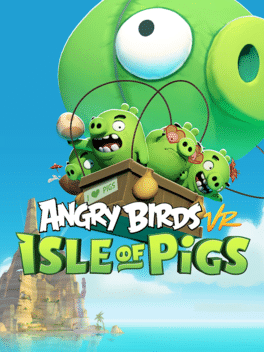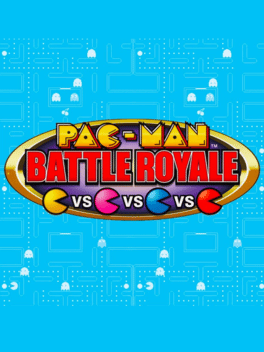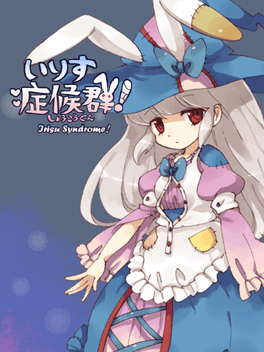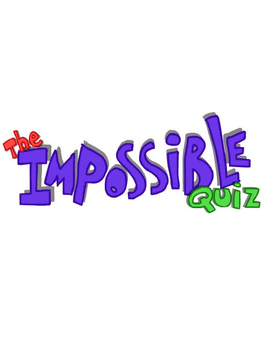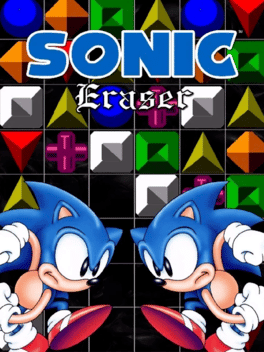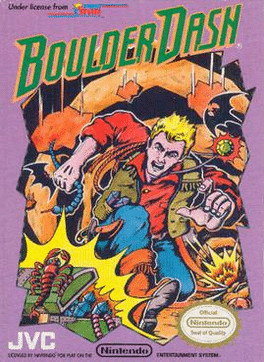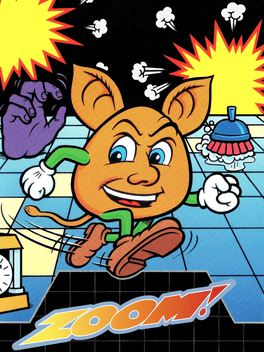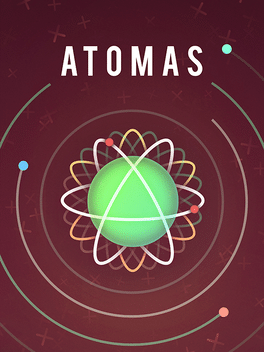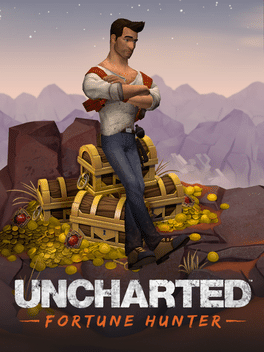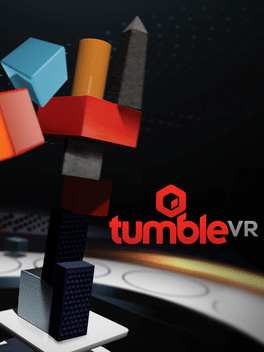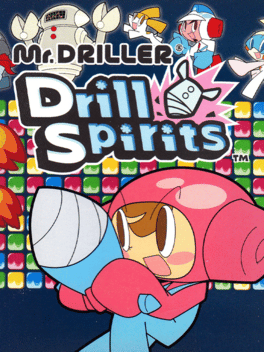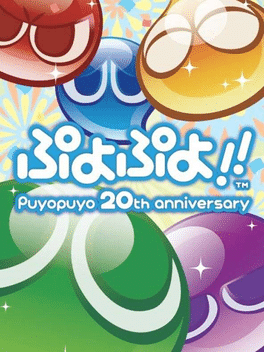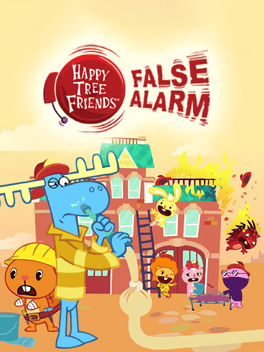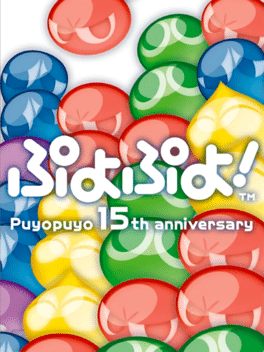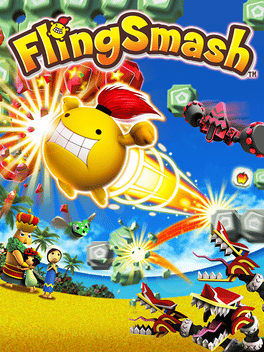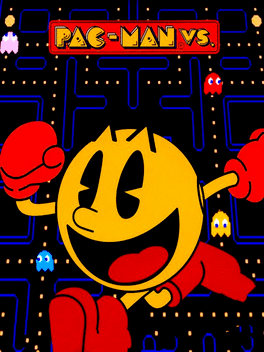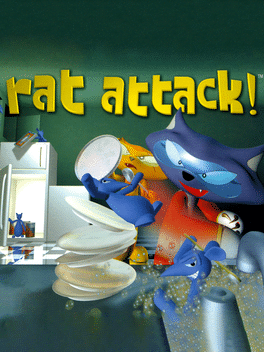Most Popular Puzzle Games - Page 6
-
Angry Birds VR: Isle of Pigs
2019
star 7.1Join Red, Chuck, Bomb and the Blues to save the stolen eggs in Angry Birds VR: Isle of Pigs, an immersive VR adventure! Explore the remote island where the greedy green pigs take their vacation in 50+ fun-filled levels (and more to come!) Make your way up to party city through exotic beaches, steep cliffs and snowy slopes, destroying their structures in the most spectacular way to earn those all-important stars. Choose from different angles to make your slingshot, using classic Angry Birds gameplay elements to progress and strive for the best possible score. Tough boss pigs, balloons, boulders and fans make each level a challenging puzzle in its own right. And using the bird’s special skills - like Chuck’s super speed or Bomb’s explosive power - will help you earn maximum points. -
Pac-Man Battle Royale
2011
star 6.2Pac-Man Battle Royale is a 4-player simultaneous arcade game created as part of Pac-Man's 30th anniversary celebration. Each player is a different colored Pac-Man, with a similar graphic style to Pac-Man Championship Edition. -
Where's My Perry?
2012
Where's My Perry?
2012
star 6Where's My Perry is a Phineas and Ferb-themed spin-off of Where's My Water? featuring Perry the Platypus (aka "Agent P"). -
Irisu Syndrome
2008
Irisu Syndrome
2008
star 7.8Irisu Syndrome is a freeware physics puzzle game created by Japanese developer wtatsu, about a group of friends on a summer camping trip that takes a dark turn when one of them goes missing. The gameplay involves shapes of various colors falling down in a tetris-like play field. It has garnered a small, cult following due in part to it's unconventional story. -
The Impossible Quiz
2007
The Impossible Quiz
2007
star 5.7See how many questions you can answer before it's Game Over. Sounds simple? Think again... the questions are BASTARD hard and require obscure insane logic, super fast reactions or just pure luck to answer correctly. It's not actually impossible though, just really really hard. GOOD LUCK! Mwahahah! :p -
Sonic Eraser
1991
Sonic Eraser
1991
star 3.9Sonic Eraser is a video game in the Sonic the Hedgehog series that was available to owners of the Sega Meganet, a modem for the Sega Mega Drive in Japan. While it is a title in the Sonic series, other than featuring the titular character, there is not much that this game has in common with others in the franchise. Since the Meganet modem never achieved worldwide availability, Sonic Eraser became a "lost" Sonic game, until February 2004, when the Sonic CulT website got a hold of the ROM through Sega's Japan-only download service. The game is a fairly simple puzzle game. In the versus mode, when a player gets a combination of three consecutive lineups of pieces, that player's Sonic attacks the other player's Sonic. The other player momentarily loses control of his pieces. The game is on Sega's B-Club download service. -
Mendel Palace
1989
Mendel Palace
1989
star 6Candy needs your help! She's fallen fast asleep and may never wake up--because she's trapped in her own dream! All her harmless dolls are suddenly out to get her! So who will rescue Candy? Someone must brave her wild nightmare world. With 20 areas and 200 levels! -
Boulderdash
1984
Boulderdash
1984
star 7.8his classic game is about a diamond chase underground with many obstacles. Try - as Rockford - to collect all required diamonds in a total of 16 caves (A-P) each with 5 difficulty levels, and find the exit in the time given. After every 4 caves (D, H, L, P) follows a so-called "intermission", a logical puzzle (without its own "cave letter"). Rockford can dig through the ground and push rocks. But these can also be dangerous. If he stands directly below a rock, Rockford can hold it on his head. But if a rock falls on his head, it will cost him a life. Rocks will not stay on each other or on walls. If Rockford digs away the supporting soil, rocks will start to slide. Furthermore, there are some not-so-friendly animals such as fireflies, amoeba and other things you'd better not touch. Butterflies and other inhabitants of the underground can only be defeated by letting rocks fall on them. When defeated, they turn into diamonds, which Rockford can pick up. As soon as the necessary amount of jewels has been collected (th -
Zoom!
1988
Zoom!
1988
star 6.8Zoom! is a puzzle game developed/released by Discovery Software in 1988. It features a 3D-like board the player moves around on. Up to two players may play simultaneously. Not to be confused with Zzoom. -
Atomas
2015
-
Uncharted: Fortune Hunter
2016
star 6Uncharted: Fortune Hunter is an original action-puzzle adventure following Nathan Drake's continued pursuit to uncover the long-lost treasures of history's most notorious pirates, adventurers and thieves. -
Tumble VR
2016
Tumble VR
2016
star 6.6Tumble VR takes the the original, much loved, PlayStation 3 game and rebuilds it from the ground up for PlayStation VR - complete with a brand new visual style, a load of new levels and some great new modes. Tumble VR is best described as an accessible, fun, engaging and immersive puzzle game. When you pull the PlayStation VR headset on we place you in an arena that will test both your physical dexterity and mental skills. Working your way through a gauntlet of tests - from simply building a tower, to creating bridges, working out fiendish puzzles and blowing up enormous towers of blocks - Tumble VR will push your skills and brainpower to the limit. Alongside the new levels and visuals for Tumble VR, we have also added a new competitive mode. This uses the PlayStation VR Social Screen feature that allows a second player to play on the same TV together with the VR player to create a social VR experience. -
Mr. Driller: Drill Spirits
2004
star 7.9Mr. Driller, experienced with the drill, much use his abilities to dig beneath the Earth's crust in a race to the finish in order to save the day. Dangerous traps await as you dig through the puzzle layout to the goal, and be careful of Mr. Driller's air supply which can run out quickly. Find the right powerups to increase abilities and air supply while fighting the time clock. -
Atomic Punk
1990
Atomic Punk
1990
star 6.8There are four modes of gameplay in Atomic Punk, including two single player modes and two multiplayer game modes. Solo: "Game A" (known as "Bomber Boy" in the Japanese version) is similar to other games in the series, with a few differences. Power-ups, known as panels, which are usually gained in each level and carried over from one to the next, can also be bought from a store by using GP, which is collected depending on how much time it takes to complete a level and how many blocks are destroyed. At the beginning of each round, the player decides which panels to use to complete the round. Another difference is that the linear gameplay of the original, with the player advancing levels after completing each one, was changed to implement a world map with nine locations. The second game mode, "Game B" (known as "Bomber Man" in the Japanese version) is the same as that in the original Bomberman game, but the stage area is squared rather than rectangular and the screen is always centered on Bomberman rather than scr -
Puyo Puyo!! 20th Anniversary
2011
star 8It is the 2nd anniversary game in the series and as such shares more similarities to "Puyo Puyo! 15th Anniversary" than "Puyo Puyo 7". This game came out 4 months before "Sonic Generations", which is also commemorating the 20th anniversary of the Sonic games. There are 24 playable characters available, each with their own 8-stage course (similar to Puyo Puyo! 15th Anniversary). This game, as it's predecessor, was released only in Japan. -
Happy Tree Friends: False Alarm
2008
star 4.1A puzzle action game based on the Flash cartoon series Happy Tree Friends. -
Puyo Puyo! 15th Anniversary
2006
star 7.5Puyo Puyo! 15th Anniversary was created by Sonic Team to commemorate the 15th anniversary of Puyo Puyo. As such, it revives both the gameplay rules of the arcade Puyo Puyo and Puyo Puyo Tsu, as well as six characters from the Madou Monogatari era of the series. It was released for Nintendo DS in 2006, and in 2007 for PlayStation 2, PlayStation Portable, and Wii This game was followed by Puyo Puyo 7. -
FlingSmash
2010
FlingSmash
2010
star 6.3The game is set on the fictional Suthon Island. It is said to hold the power to protect the world from harm, which it was protected by a large palm tree and watched over by the nature spirits in the island. Before the game, the antagonist, Omminus, takes over the island in order to rule the world. As a result, the palm tree begins the wither and the princess becomes ill. The leader of the nature spirits recalls an old legend about a hero using sacred pearls to restore the peace. He finds the treasure chest where the hero, Zip, resides. Zip, and a friend from the neighboring Eesturn Island, Pip, set out to retrieve the pearls and defeat Omminus. -
Pac-Man Vs.
2003
Pac-Man Vs.
2003
star 6.4Pac-Man Vs. is a Pac-Man video game originally designed exclusively for the Nintendo GameCube that was included as an extra bonus disc with the Player's Choice edition of Pac-Man World 2. -
Rat Attack!
1999
Rat Attack!
1999
star 8.6Play as one of the Scratch Cats, an elite superhero team, who are out to save the world from Washington and Jefferson, two evil mutant space rats who wish to enslave the world in rats. Explore each puzzle level and wipe out the rat threat. First you need to catch the rat, using the Eraticator. Then you must find the Destructor pad in each level in order for the rat to be taken out. Each level has a quota of rats you must remove, and if you fail to do so within the time limit (which, in this case, is when the rats destroy everything in the level), you lose.
